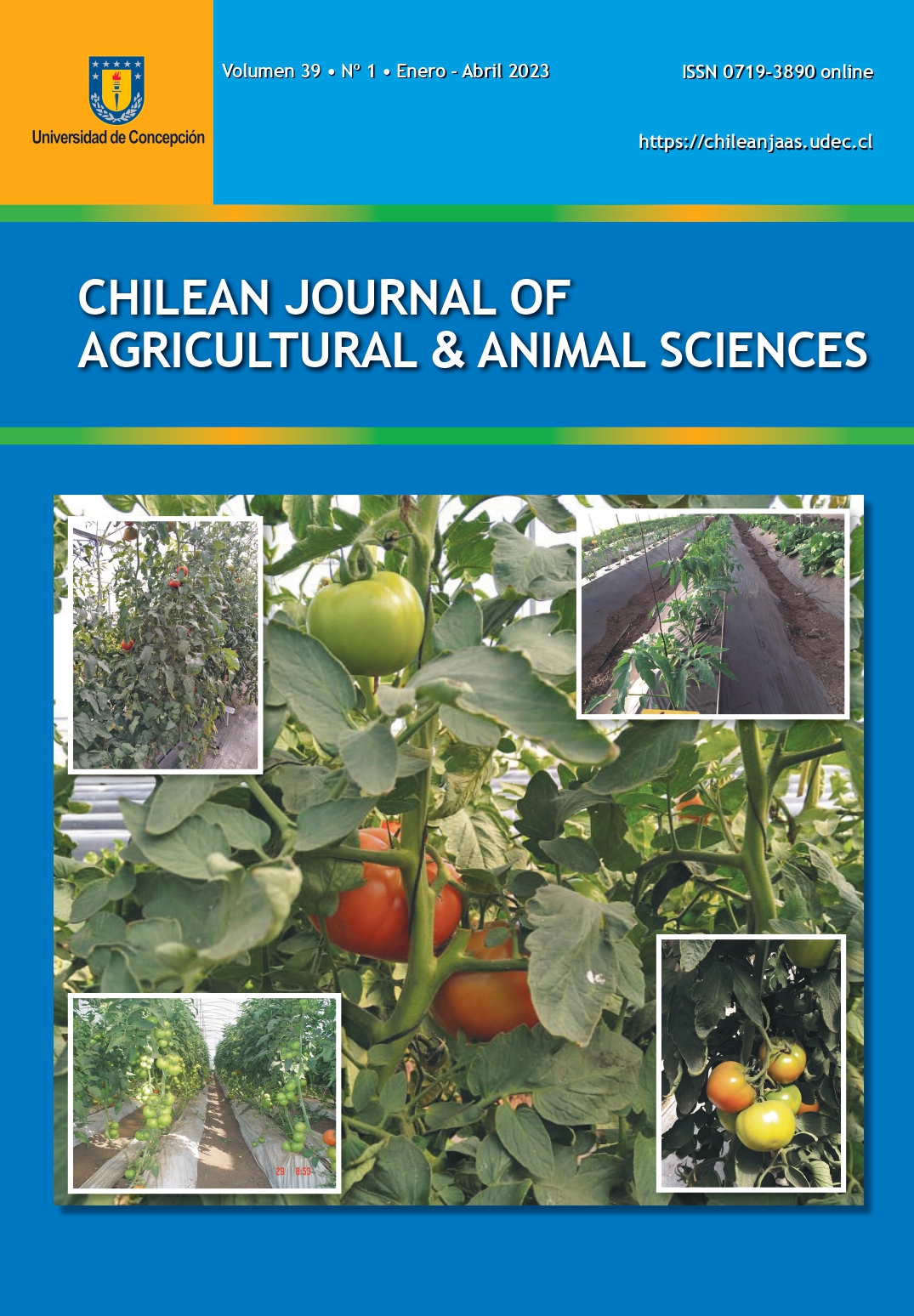GROWTH AND SALT TOLERANCE INDICATORS OF WINTER PURSLANE (Claytonia perfoliata Donn ex Willd.)
DOI:
https://doi.org/10.29393/CHJAA39-5CIMD40005Keywords:
horticulture, greenhouse, soil degradation, edible weedsAbstract
At the global level, there are 76 million hectares of soils affected by salinity. As this problem affects greenhouses of horticultural production in the Green Belt of Buenos Aires, resulting in a crop yield decrease of up to 50%, there is a need to evaluate plant salt tolerance of vegetable crops. The objective of this work was to evaluate the growth of winter purslane (Claytonia perfoliata Donn ex Willd.) in a saline environment, identifying indicators of adaptation mechanisms. The species was cultivated in a soilless system with three levels of electrical conductivity: 1.5 (control), 3.5 and 6.5 dS m-1. Growth variables were measured on a weekly basis. At harvest, accumulation of sodium, potassium, and calcium as well as levels of sugars (fructose, sucrose, and glucose), abscisic acid and salicylic acid were determined in leaves, roots, and inflorescences. In leaves, indicators of antioxidant regulation (glutathione, malondialdehyde, catalase, guaiacol peroxidase and superoxide dismutase) were also evaluated. None of the growth variables was affected by the saline treatments. However, there was a significant difference in aerial fresh weight and dry weight between 1.5 and 6.5 dS m-1 before harvest. Regarding salt tolerance indicators, sodium accumulation increased in leaves and inflorescences with the increase in conductivity. For the rest of the indicators, there were no clear trends or differences at the statistical level. In conclusion, winter purslane adapts to saline environments and accumulates sodium in its tissues, without affecting growth.
Downloads
Published
How to Cite
Issue
Section
Copyright (c) 2023 Marcela Harris, Christian Krizaj, Facundo Ventura, Diana Frezza

This work is licensed under a Creative Commons Attribution 4.0 International License.







